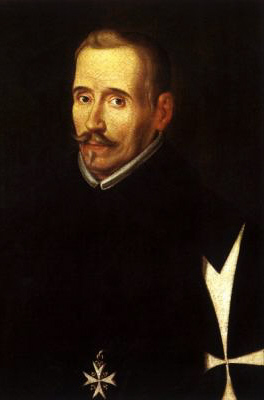The directory «Plots»
Vega Carpio Lope Félix de
(1562–1635)

Spanish dramatic poet, founder of the Spanish drama, b. Madrid. Lope, born a peasant, was orphaned at an early age. He wrote the first of his nearly 1,800 plays at 12, and by 25 he was an established playwright and a celebrated wit. He was involved in countless amorous adventures and several scandals, one of which caused him to be banished from Madrid for some years. In 1588 he joined the Spanish Armada and, surviving the campaign, took up his theatrical career and acquired a lifelong patron, the duke of Sessa. Lope’s first wife, Isabel de Urbino, was immortalized in his poetry and plays as Belisa. Although he wrote lyric verse and several epic poems (e.g., La hermosura de Angélica, 1502, a sequel to Ariosto’s Orlando Furioso), his masterworks were his comedias. These graceful and vigorous plays combined the comic, the serious, and the ironic. Major examples are El mejor alcalde, el rey (tr. The King, the Greatest Alcade, 1936), El rey don Pedro en Madrid, El castigo sin venganza [punishment without vengeance], and Peribáñez (tr. 1937). Lope’s themes were the varied aspects of honor, human dignity, justice, and the conflict of peasant and nobleman. He developed many genres, including historical drama, cloak-and-dagger love intrigues, and romantic extravaganzas, in addition to writing tragedies and religious plays. He invented a comic type known as el gracioso, which became a stalwart of Spanish theater. In 1609, Lope set down his dramatic precepts in Arte nuevo de hacer comedias [the new art of writing plays] (tr. 1914). To hold the attention of his audiences, he kept the length of his plays relatively short, consciously ignored the classical unities, convoluted his plots to produce the unexpected, and wrote so as to be easily understood by the common people. Adhering to these self-imposed rules, Lope gained the adulation of his public and the scorn of his rival, the classicist Góngora. Lope took religious orders in 1614 and achieved important church positions despite his continued love affairs. In his last years he finished La Dorotea (1632), an autobiographical novel begun in his youth. Nearly 500 of Lope’s works are extant. Famed for vitality, wit, and ingenuity, they assure his position as the foremost and most prolific Spanish literary innovator.
Spain, 1935, Lope de Vega's Bookplate
Spain, 1935, Lope de Vega
Spain, 1935, Lope de Vega
Spain, 1935, Scene from «Peribanez»
Spain, 1951, Lope de Vega
Spain, 2001, Lope de Vega
Spanish Sahara, 1959, Lope de Vega
Spanish Sahara, 1959, «Star of Sevilla»
Spanish Sahara, 1959, Peribanez
Spanish Sahara, 1959, Lope de Vega
Spain, 2002.08,  Santa Cecilia. Lope de Vega
Santa Cecilia. Lope de Vega